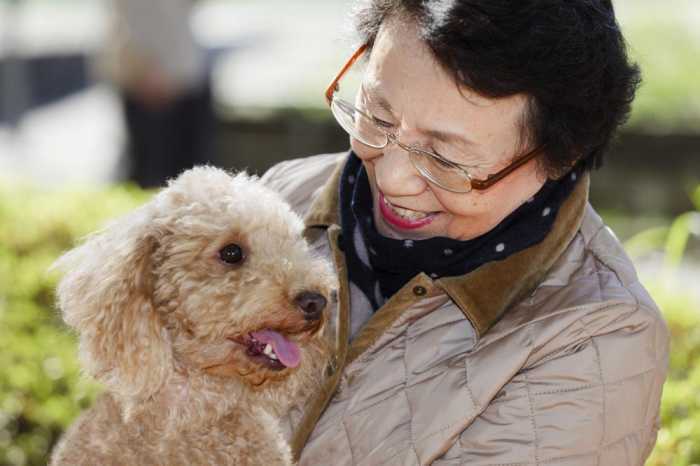What to do if your dog collapses
Posted on 17 February, 2016

Most of our Homesitters are home sitters and dog sitters and cat sitters – but mostly dog sitters … so no apology for sharing yet another excellent article by veterinary surgeon Rebecca Bailey [at the Larkmead Veterinary Group based in Oxfordshire] in the November/December edition of the BASC magazine.
Rebecca writes about the causes of sudden collapse and advises what to do if it happens to your dog: “There is rarely anything more frightening than when a dog suddenly collapses or goes weak and wobbly. If it should happen to your dog it is important to know what to do. This article will help you to understand some of the possible causes for collapse or weakness and what may be done to help prevent or deal with the problem.
Exercise induced weakness or collapse
Collapse can sometimes follow periods of intense exercise, either short sharp bursts of physical activity or prolonged work in tough conditions. In these situations it is uncommon for the dog to lose consciousness, however disorientation, in-coordination and general weakness may occur. The gums often remain quite pink and after a short rest the dog may be able to move around almost normally again. Dogs that are brought to the surgery shortly after such a collapse sometimes have low blood sugar which, when corrected, results in a marked recovery and return of strength and general awareness. Veterinary scientists are still investigating why some dogs seem to be more prone to this type of collapse than others.
Cardiovascular problems
A dog may collapse due to failure of the circulatory system. Complex mechanisms exist to ensure that oxygenated blood is pumped around the body as required by different organs during exercise. Sometimes underlying heart problems can prevent this happening. Occasionally there can be physical damage to the heart such as a leaking valve or disease; in other cases there may be a problem with the electrical activity controlling the way the heart beats. These problems may not be discernible during normal low-level activity and it is not until additional strain occurs that signs appear. Dogs do not suffer from heart attacks the same way as humans; however, they can collapse if there is a lack of output from the heart for any period. If you are able to check the colour of the dog’s gums at the time this happens you may find them to be pale or even slightly blue in colour. Again, after a period of time the dog is usually able to get up and move around normally. Regular veterinary health checks are a crucial way of identifying some of these cases before they cause problems.
Neurological problems and seizures
Some seizures or fits occur as a result of low blood sugar levels following excessive exercise. Another cause could be sudden over-stimulation of the brain such as during a period of intense excitement. When a dog is having one of these episodes it may either convulse or show unusual muscle rigidity. It is not always possible to determine an underlying cause and in these cases the condition may be given the name of “idiopathic epilepsy”. Sometimes the dog may behave abnormally immediately after the fit; this can include being confused or unusually hungry and in some cases the dog may be aggressive. For many dogs it is possible to control the seizures using medication so they are able to have a normal life.
What to do if your dog collapses
~ make sure that it is safe to approach. If the dog is fitting do not put your hands near the mouth as reflex movement may cause you to get bitten.
~ remain as calm as possible and reassure the dog.
~ if it is safe to do so, lift the dog’s lip and check the colour of the gums; this may help you to understand what has caused the collapse.
~ a small amount of food may help some dogs recover; avoid chocolate as this is toxic to them.
~ rest any dog that has had a collapse and if signs are apparent for more than ten minutes then seek further help.
How to minimise the risk of collapse
Sometimes collapses can be impossible to prevent, however a few basic precautions can be helpful.
Make sure your dog attends the vet on a regular basis. Annual checks can often reveal heart conditions in the early stages before any outward signs are apparent.”
And for working dogs, Rebecca writes:
“During the day, rest your dog when possible. If it has been working hard during the morning, put it somewhere quiet to rest over lunchtime; a small snack can help boost energy levels in the afternoon.
If you dog gets very wet during the first half of the day, dry it as much as possible before resting it and use a dog coat to keep it warm until it goes out again. By doing this the dog is less likely to shiver to keep warm and will use up less energy.”
* * * * *
As usual, sensible advice from Rebecca Bailey. Our Homesitters are always directed to follow carefully the dog owner’s instructions, and be very wary of letting the dog become over-excited or over-tired. If in doubt the dog sitter uses common sense, and if they ever have a problem, Homesitters staff are always available, day and night.
To book a Homesitter to look after your dog while you're away, please call our Head Office on 01296 630 730 or click here.
Tags:

